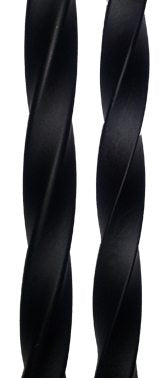|
One of the most common questions we receive about our products is “What is the difference between Hollow and Solid balusters.” This answer could vary depending on which vendor you purchase your products from. Some companies produce a flimsy and cheap hollow product. Careful of what you buy off the big box store shelves. Solid Iron Balusters- Solid Iron – Weighs 3 pounds on average.
- Texture – Slight “iron” texture on balusters because it is not a machined product. (It’s Forged).
- Edges – The edges (corners) of solid products are slightly more squared off. See photo below.
- Strength – Meets all building code standards.
- Cutting – Cuts with chop saw and metal cutting blade.
- Shipping – Solid iron gets heavy quick. Shipping is more costly.
Hollow Iron Balusters- Hollow Iron – Weighs 1.5 pounds on average.
- Texture – Smooth finish because its machined rather than forged.
- Edges – The edges (corners) are a little more Round because its machined.
- Strength – Meets all building code standards. Actually is made out of a higher grade steel to be stronger.
- Cutting – Cuts the same but easier and faster.
- Shipping – Cheaper to ship!

Hollow on Left – Solid on Right Solid vs Hollow SummaryBoth balusters look virtually the same once installed. Hollow balusters are cheaper to ship, easier to handle and cut and install the same. Hollow balusters are quickly becoming the industry standard for production home building due to the cost savings and ease of installation. Users who opt for solid generally view solid as being higher quality, which is usually true for lower quality brands of balusters, but our brand the quality is the same either way you go.
|